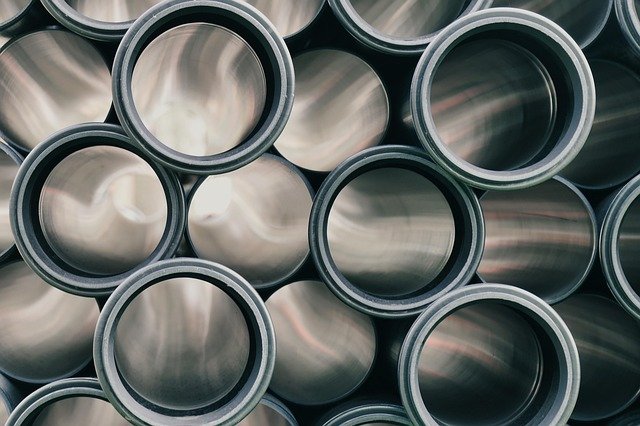Materials guide for corrosion-resistant wet-zone fittings
Selecting appropriate materials for wet-zone fittings reduces corrosion, extends service life, and improves safety and accessibility in rooms with frequent moisture exposure. This guide summarizes material choices, installation considerations, and maintenance practices to help designers, specifiers, and homeowners choose corrosion-resistant solutions for fixtures, drainage, tiling, and related systems.

Selecting materials for wet-zone fittings requires balancing durability, safety, and maintenance needs. Corrosion resistance matters for fixtures and fittings exposed to water, cleaning agents, and high humidity. Use materials that tolerate repeated wet-dry cycles and chemical exposure, and pair them with correct waterproofing, ventilation, and drainage strategies to limit deterioration. Consider accessibility, lighting, storage, and insulation at the design stage so that durable components remain serviceable and safe over time.
How do fixtures affect corrosion resistance?
Choose fixtures with inherent corrosion-resistant properties and appropriate surface finishes. Common options include high-grade stainless steels, brass with protective coatings, and polymers designed for wet environments. Pay attention to exposed fasteners, concealed supports, and interfaces where dissimilar metals meet—these are common starting points for galvanic corrosion. Lighting fixtures intended for wet zones should carry suitable ingress protection ratings, and storage units should use treated surfaces or corrosion-resistant hardware to avoid staining and structural weakening over time.
What waterproofing materials suit wet zones?
Waterproofing is the first line of defense against corrosion in wet zones. Membranes, liquid-applied coatings, and cementitious systems each provide different levels of protection depending on substrate and exposure. For long-term resistance, ensure waterproofing extends beneath floor finishes and up walls to create continuous protection. Sealant choices at joints and around penetrations should be compatible with surrounding materials and maintain elasticity over temperature changes. Proper detailing around fixtures, drains, and plumbing penetrations reduces the risk of moisture ingress that accelerates metal corrosion.
How should drainage be designed for durability?
Effective drainage limits standing water and the prolonged contact that accelerates corrosion. Sloped flooring, appropriately sized drains, and trap designs that minimize debris accumulation are key. Drainage components exposed to constant moisture benefit from corrosion-resistant materials and sacrificial or replaceable strainers. Ensure grout and flooring interfaces around drains are sealed and maintained so water channels away from critical fittings. In larger installations, consider redundant or secondary drainage paths and easily accessible cleanouts for routine maintenance.
How does ventilation reduce corrosion risk?
Ventilation lowers relative humidity and reduces condensation on surfaces, slowing corrosion processes. Specify ventilation rates appropriate to room size and use, and position vents to assist drying of wet surfaces rather than recirculating humid air. Where continuous mechanical ventilation is impractical, passive ventilation combined with dehumidifying finishes and insulating cold surfaces can help. Temperature differentials and poor insulation often produce condensation at interfaces—address insulation and airflow together to limit moisture accumulation on fittings and structural components.
Which tiling and grout resist moisture best?
Tile material, backing, and grout selection influence moisture management and the longevity of adjacent fittings. Dense, low-porosity tiles and epoxy or polymer-modified grouts reduce water penetration compared with highly porous materials. Proper substrate preparation and suitable waterproofing beneath tile assemblies prevent trapped moisture that can corrode metal supports and anchors. Regular joint inspection and timely re-sealing of grout or joint sealants prevent capillary action that can draw water toward metal components and concealed fixtures.
How to address plumbing, insulation, and maintenance?
Plumbing material selection—such as corrosion-resistant copper alloys, plastic piping, and appropriately specified valves—affects long-term performance in wet zones. Insulate cold-water pipes to avoid condensation on nearby fittings, and protect hot-water lines to reduce heat-driven chemical interactions. Implement a maintenance plan that includes cleaning, inspection of sealants, replacement of sacrificial components, and checks of ventilation and drainage. Design for accessibility so that routine maintenance tasks can be performed without disturbing primary finishes or causing damage to corrosion-resistant elements.
Conclusion A systems approach combining suitable materials, robust waterproofing, effective drainage, and reliable ventilation yields the best outcome for corrosion resistance in wet zones. Thoughtful detailing of fixtures, tiling, grout, plumbing, insulation, lighting, storage, and accessibility improves durability and simplifies maintenance. Choosing compatible materials and planning for routine inspection reduces long-term deterioration and supports safer, more dependable wet-zone installations.





